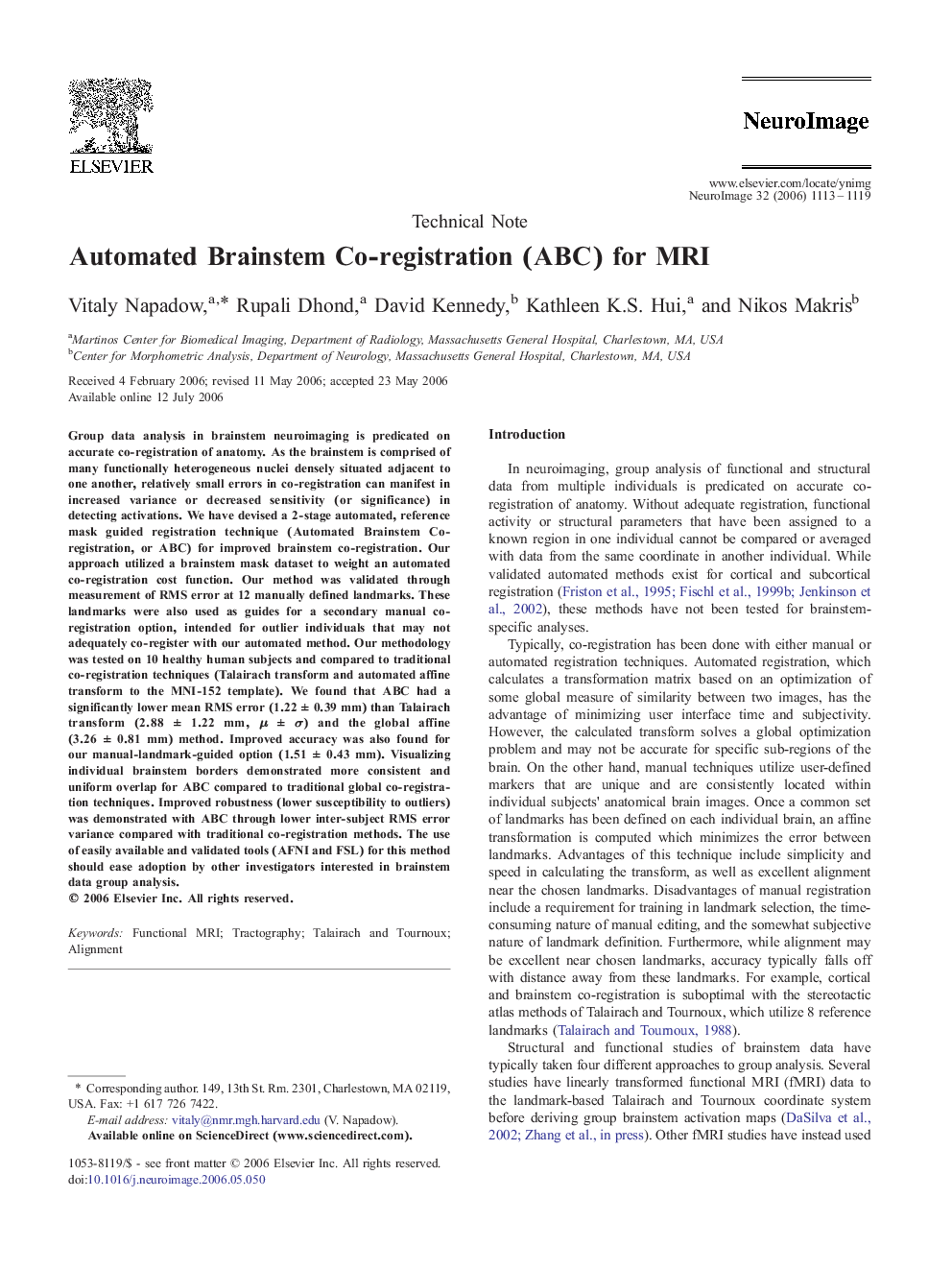| Article ID | Journal | Published Year | Pages | File Type |
|---|---|---|---|---|
| 3074537 | NeuroImage | 2006 | 7 Pages |
Group data analysis in brainstem neuroimaging is predicated on accurate co-registration of anatomy. As the brainstem is comprised of many functionally heterogeneous nuclei densely situated adjacent to one another, relatively small errors in co-registration can manifest in increased variance or decreased sensitivity (or significance) in detecting activations. We have devised a 2-stage automated, reference mask guided registration technique (Automated Brainstem Co-registration, or ABC) for improved brainstem co-registration. Our approach utilized a brainstem mask dataset to weight an automated co-registration cost function. Our method was validated through measurement of RMS error at 12 manually defined landmarks. These landmarks were also used as guides for a secondary manual co-registration option, intended for outlier individuals that may not adequately co-register with our automated method. Our methodology was tested on 10 healthy human subjects and compared to traditional co-registration techniques (Talairach transform and automated affine transform to the MNI-152 template). We found that ABC had a significantly lower mean RMS error (1.22 ± 0.39 mm) than Talairach transform (2.88 ± 1.22 mm, μ ± σ) and the global affine (3.26 ± 0.81 mm) method. Improved accuracy was also found for our manual-landmark-guided option (1.51 ± 0.43 mm). Visualizing individual brainstem borders demonstrated more consistent and uniform overlap for ABC compared to traditional global co-registration techniques. Improved robustness (lower susceptibility to outliers) was demonstrated with ABC through lower inter-subject RMS error variance compared with traditional co-registration methods. The use of easily available and validated tools (AFNI and FSL) for this method should ease adoption by other investigators interested in brainstem data group analysis.
